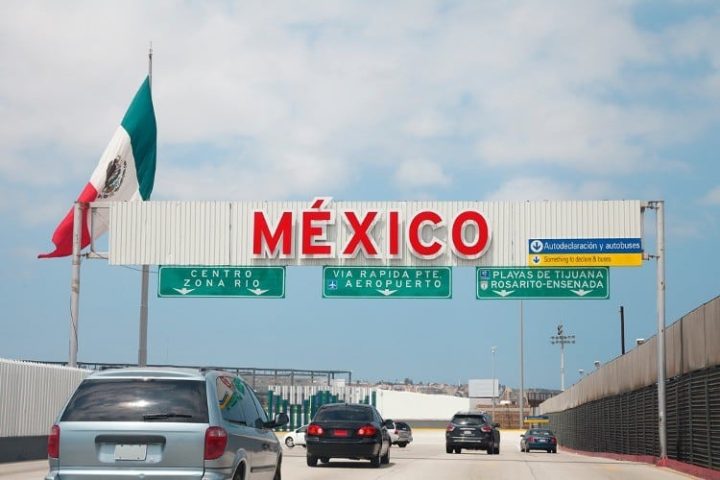
Once sworn into office, President Joe Biden criticized his predecessor’s “inhumane” border policies that triggered a crisis along America’s southern border. The media captured images of illegals celebrating crossing the border wearing Joe Biden t-shirts as they were entering Baja, California. A little more than one year later, Californians are going the other way to avoid the skyrocketing cost of living and out-of-control crime.
According to a CNBC report titled, “The California exodus continues as residents head south of the border,” “a rising number of former Californians are migrating out of the country altogether and are instead heading south of the border.”
“I would say at least half are coming down from California,” Darrell Graham of Baja123 Real Estate Group told the outlet. “Suddenly, the cost of taxes, the crime rates, the politics, all the things that people are unhappy with in California are coming down to Mexico.”
A total of more than 360,000 Californians left in 2021 to seek for better life elsewhere, which continued the 30-year-old trend, CNBC observed. Most of them relocate to the states of Arizona, Washington, and Texas. The exact number of Californians who left for Mexico has not been documented, but as of 2020, 800,000 U.S. citizens are living in Mexico, per CNBC.
As of today, as many as 200,000 Californians commute between the Golden State and Mexico every day because “many of them work in California and live just below the border in Baja California due to its proximity.”
Travis Grossi, a content creator for Café con Leche Travels, told CNBC that he was able to save half of his income by moving to Mexico.
“We were able to cut our budget in half, which allowed us to really focus on our careers and the things we wanted to do artistically without [having to] just hustle and hustle every day, every week, every month, to just meet the bare minimum,” Grossi said.
In Hollywood, he shelled out $1,600 a month for a one-bedroom apartment, while in Mexico his rent is $850 per month for a house with two bedrooms, three bathrooms, a shared pool, and 24-hour security.
According to data compiled by The Daily Mail, living in Mexico while working in California makes economic sense. A person receiving an average Californian annual salary of $112,000 may afford a lot in Mexico, where the average residential property price is $63,593 (vs. $797,470 in California), a gallon of gas is $4.55 (vs. $6.43 in California), and monthly rent is $430 (vs. $1,503 in California).
California’s Consumer Price Index (CPI), which measures price changes in goods and services purchased by urban consumers, rose in 2022 by 6.8 percent, per state data.
Aside from the exorbitant cost of living, California’s high crime rate appears to be a major factor hastening the exodus.
According to the Public Policy Institute of California, four of California’s major cities — Los Angeles, Oakland, San Diego, and San Francisco — showed increases in property and violent crime numbers in 2021. “In particular, the troubling increase in homicides that we saw in 2020 appears to continue — homicides in these cities were up by about 17% in 2021,” noted the researchers. In 2020, homicides in California increased by 30 percent, and aggravated assaults went up by 7.5 percent.
The institute posted last May that “California appears to be on the verge of a new demographic era, one in which population declines characterize the state.”
The report noted that such factors as lower levels of international migration, declining birth rates, and increases in deaths all played a role in the trend, yet the main driver was out-of-state migration.
Since 2010, it is reported, about 7.5 million people, primarily of low- and middle-income, moved from California to other states, while only 5.8 million people moved to California from other parts of the country.
And it is not only people leaving the state.
According to a report published by the Hoover Institution at Stanford University in August 2021, California lost a total of 74 corporate headquarters just in the first six months of the year. The migration took place across a broad range of industries, including manufacturing, aerospace, financial services, real estate, chemicals, healthcare, and technology. Businesses fled the state because it was “too expensive, too regulated and too heavily taxed, both for companies and for the workers they hire,” per the report.
While people and businesses are leaving the state in droves, the state has implemented numerous incentivizing policies to best accommodate illegal immigrants.
In October 2017, California joined a number of other blue states in designating itself a “sanctuary state” for illegal immigrants, banning local law enforcement from inquiring about the immigration status of suspects and cooperating with the Immigration and Customs Enforcement (ICE) agency.
As reported by ImmigrationReform.com in June 2021, Governor Gavin Newsom signed a state budget “that opened the state’s health insurance program, Medi-Cal, to qualifying low-income illegal aliens 50-years-old and over.” At the time of the report, nearly 200,000 illegal aliens already had access to Medi-Cal.
That year, California lawmakers approved $600 stimulus checks for state residents, including illegal immigrants.
There are numerous and ever-expanding social programs designed for illegals entering California, such as the Cash Assistance Program for Immigrants, food stamps, and medical and other services.




